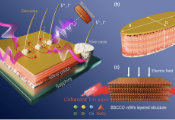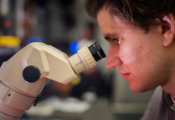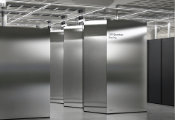X-Rays From Atomic Systems Could Reveal New Clues About Rival Quantum Theories
September 9, 2024 -- The apparent weirdness of the quantum world is often exemplified by the paradox of Schrödinger's imaginary cat that exists in a limbo state of being both alive and dead until looked upon by an observer. But in the real world we never encounter such zombie felines.
Quantum effects do not seem to extend to very large objects–like cats, people or houses–and physicists do not agree on exactly why not. Now, an international team of scientists has proposed a new and refined way to test the validity of some proposed alternative models to standard quantum theory, which offer a possible explanation. Their work was published in the journal Physical Review Letters in June 2024.
According to standard quantum theory, before an object is observed it can exist in a superposition state with multiple contradictory properties. A simplified way of understanding this is to say that particles can be in two places at once, or a radioactive atom can have decayed and not decayed, at the same time, says Catalina Curceanu, a member of FQxI and an experimental nuclear and quantum physicist at the National Institute for Nuclear Physics (INFN), in Frascati, Italy.
"So, if you imagine locking a cat in a box with a vial of poison that will be released when a radioactive atom decays, there is a scenario in which the radioactive source is in a decayed and not decayed superposition of states, and so the vial is both open and closed, the poison is both released and contained, and the cat is in a superposition of life and death," she says.
In experiments, such superpositions have been observed in objects as large as a sapphire crystal weighing in at 16 micrograms, for example. According to standard quantum theory, superpositions could, in principle, persist in even bigger objects. But we do not see these superpositions in everyday life.
Physicists describe quantum systems mathematically using a "wavefunction" that can track its evolution. "For some reason, these wavefunctions when observed are prone to 'collapse'—at which point, quantum systems behave like everyday 'classical' systems, losing their genuine quantum attributes," says Curceanu. "But standard quantum theory cannot tell us how or why this happens. This is the essence of the so-called 'measurement problem' in quantum mechanics."
The measurement problem led independent teams of scientists to develop a suite of different explanations, among which are "quantum collapse models"—rival alternatives to standard quantum theory "that propose a physical process triggers the collapse of the wavefunction in such a way that the bigger the system is, the faster the collapse goes," says Curceanu.
Evidence of collapse
There are two main types of quantum collapse models: The first are called Continuous Spontaneous Localization (CSL) models, in which the collapse is caused by an intrinsic, random process, which may or may not be related to gravity or something else. This process happens spontaneously and continuously.
In the second set of models, the collapse is related explicitly to gravity–for instance, in the so-called Diósi-Penrose models, developed independently by FQxI members Lajos Diósi at the Eötvös Loránd University, in Budapest, Hungary and Nobel Laureate physicist Roger Penrose, of Oxford University, in the U.K.
Curceanu and her colleagues—and other independent groups—have spent many years searching for signs of such spontaneous radiation, in the form of high-energy "gamma" radiation. But, as yet, they have found no evidence for them. This has enabled physicists to constrain and rule out various versions of the collapse models—in particular the simplest version of the gravity-related collapse models—and also to constrain the CSL models' parameters.
In their most recent work in Physical Review Letters, Curceanu, Diósi, Kristian Piscicchia and Simone Manti, also at INFN, Sandro Donadi, at Queen's University, in Belfast, Ireland, Angelo Bassi, at the University of Trieste, in Italy, and Maaneli Derakhshani, an FQxI member at Rutgers University in New Jersey, calculated the features of the spontaneous electromagnetic radiation that should be emitted from atomic systems at lower energies, in the X-ray domain.
The team found big differences with previous expectations for the simplest models. "Quite surprisingly, in this low-energy regime the spontaneous radiation rate was found to strongly depend on the atomic species under investigation," says Piscicchia.
Curceanu and her colleagues are updating their own experiment performed at the LNGS-INFN underground laboratory in Italy, to search for these X-rays. They plan to explore the predicted relationship between the spontaneous radiation and the atomic structure in dedicated experiments using several targets.




































